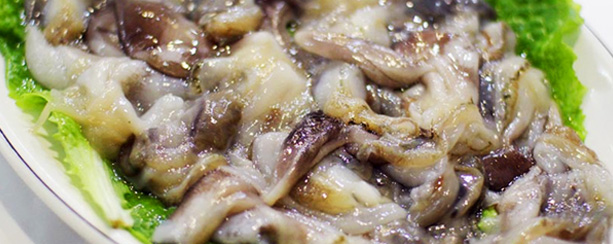Namdang-ri Cockles

Namdang-ri Cockles
Cockles are called saejogae ("sae" meaning bird and "jogae" meaning clam) because of its resemblance to the beak of a bird and also because it moves as fast as birds when it's underwater.
It is similar to bloody clams in appearance and it is similar to the size of a child's fist. Because it's hard to farm it, most are natural. Shabu shabu is the best way to enjoy cockles, and for 2 people, 1kg of cockles is enough. You can enjoy tender and savory cockles by dipping in boiling water for 10 to 15 seconds.
It is healthful because it is low in cholesterol and fat and high in proteins.
The cockles from the Cheonsuman Bay are rich in proteins, iron and taurine, and are known for their excellent flavor.
Cockles are caught starting in early December. But they are the tastiest between January and February, when the water temperature drops and their flesh becomes thicker. They do not smell or taste as good after the spawning period in March.
You can try the cockles from the Cheonsuman Bay around the Port of Namdang and Gung-ri Port. In winter, the Cockles Festival is held around the Port of Namdang.
Characteristics and Advantage of Cockle in Namdangli
| Characteristics | Advantage | How to cook |
|---|---|---|
| Skin is thin and soft. It is rich in protein, iron, calcium and vitamin with low fat. | It has a chewy and soft taste, as good as a good diet product. | Put it in boiling water shortly. This way you can feel the real taste of it. (if it is boiled too long, skin becomes tough.) → Put ramen or noodle in the water boiled with cockle (no need to add seasoning) → Clean and Fresh Cockle Ramen |